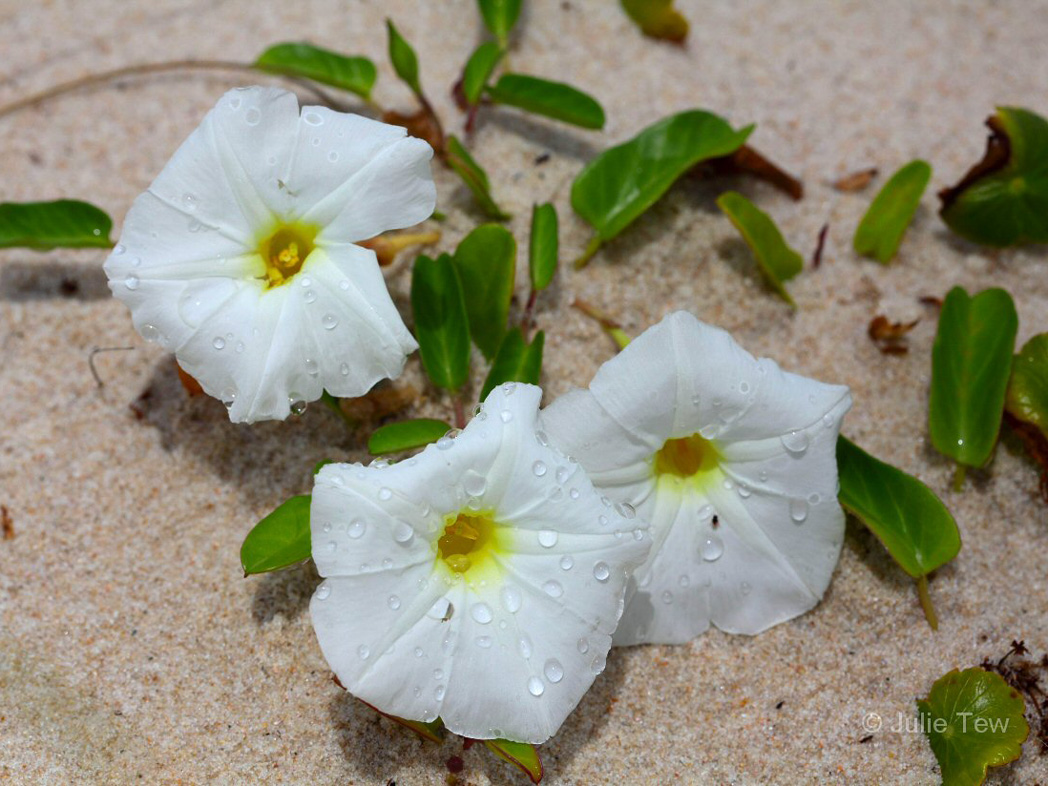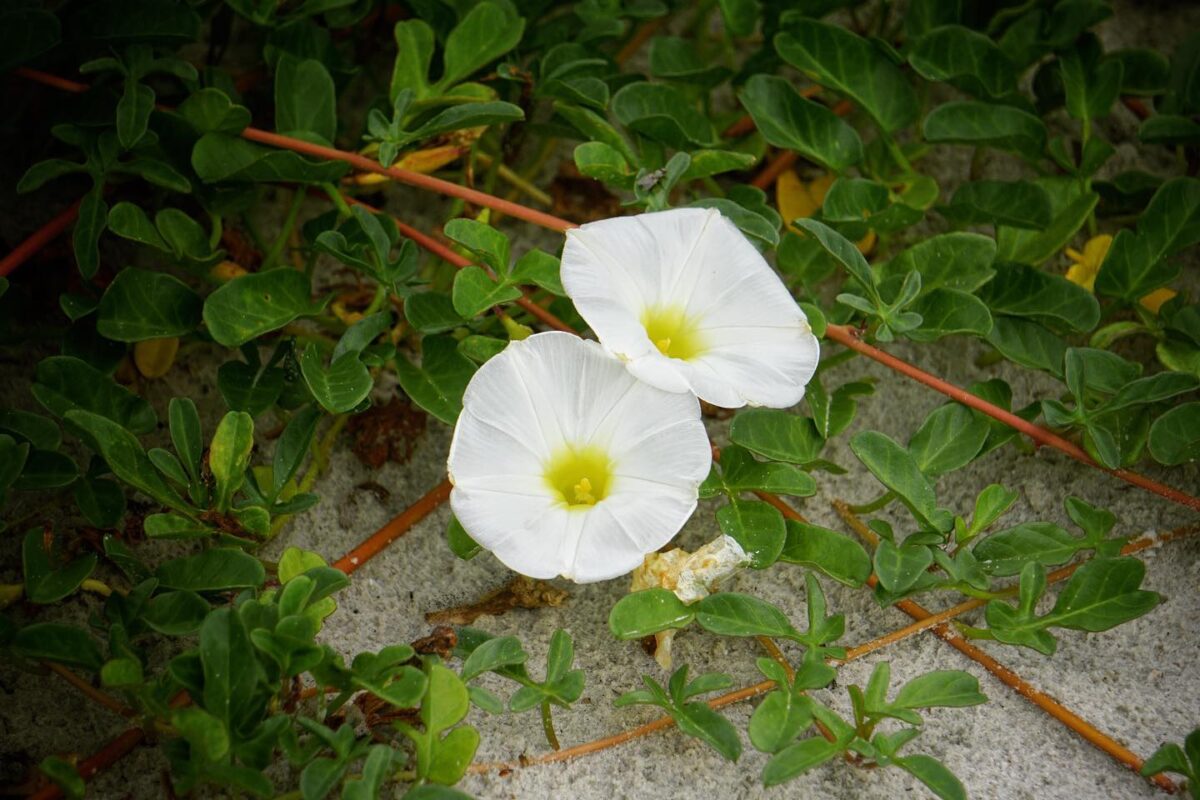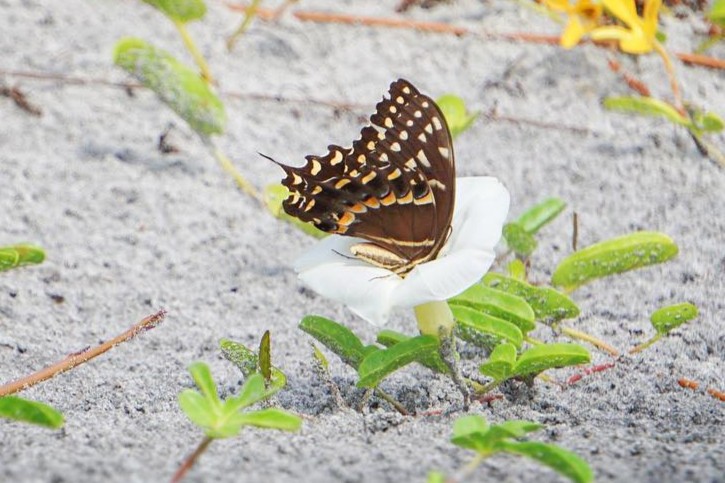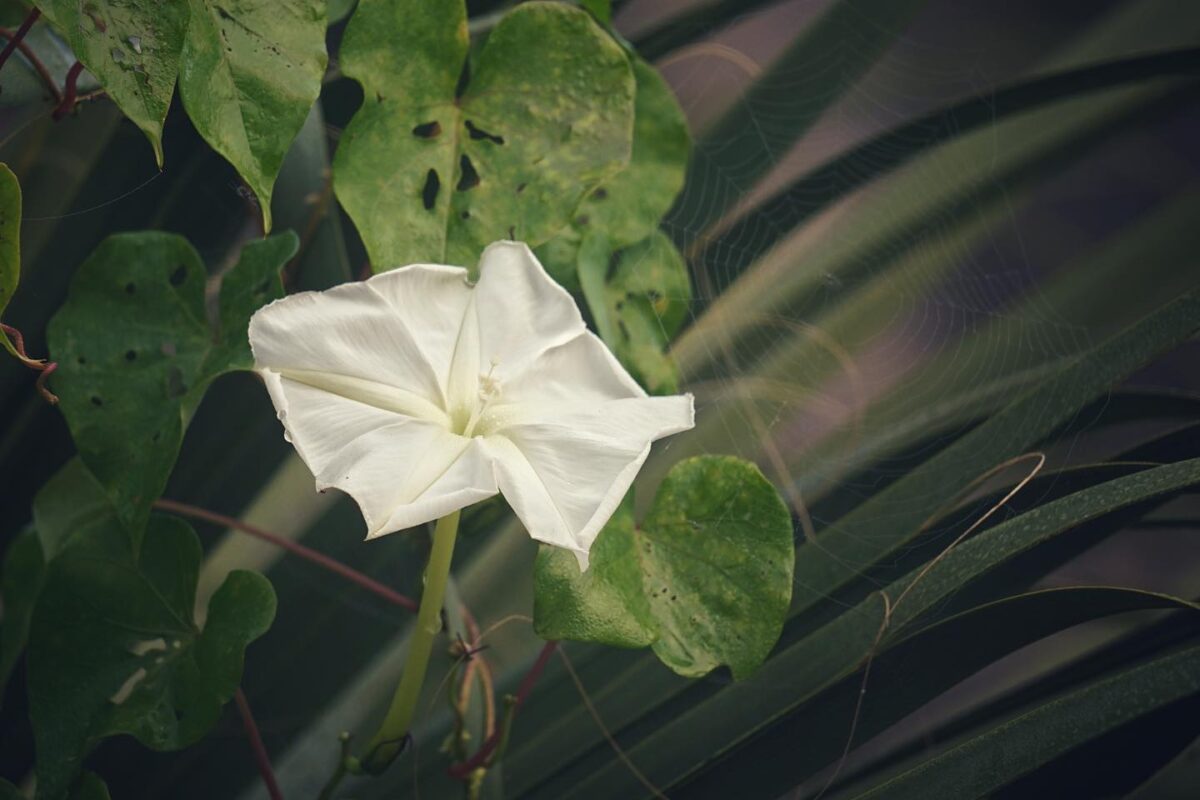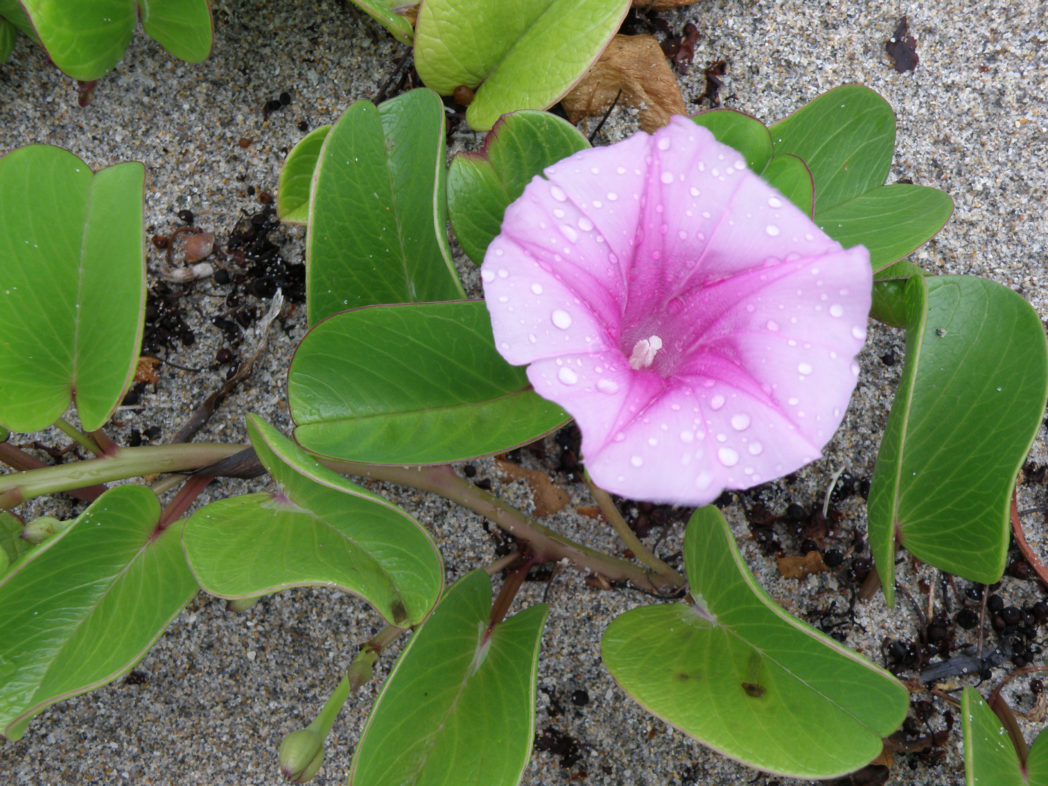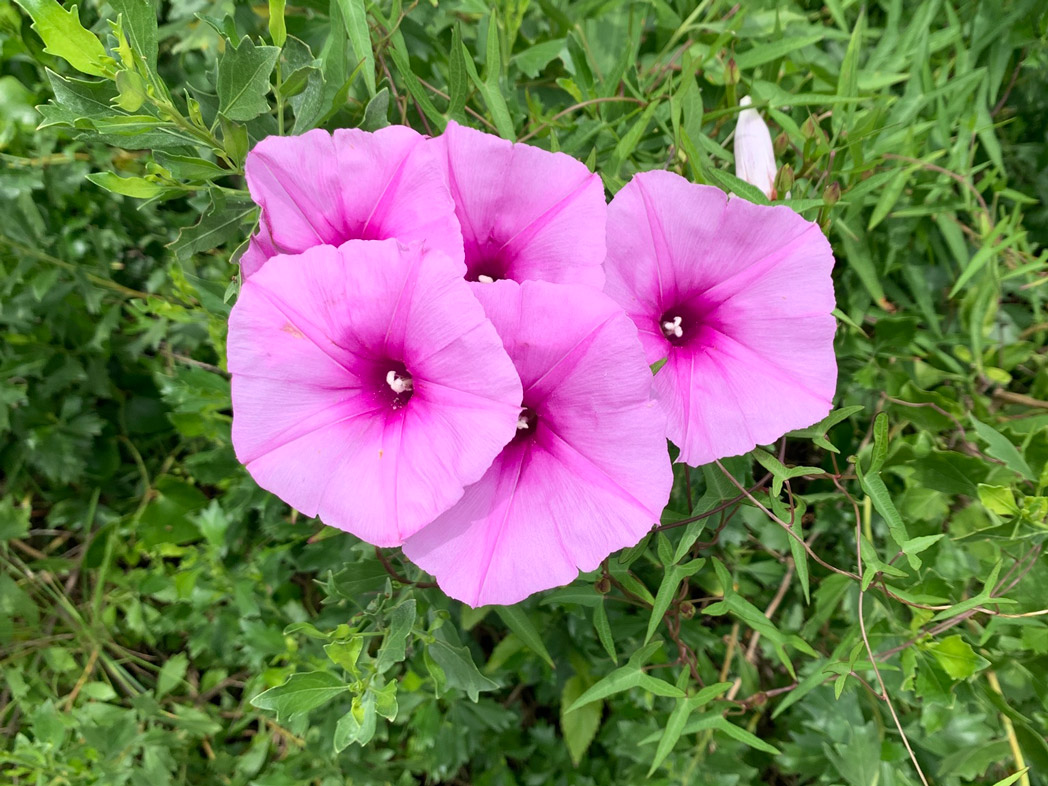Beach morning glory
Pictured above: Beach morning glory (Ipomoea imperati) by Julie Tew. Click on terms for botanical definitions. View post as a PDF.
Beach morning glory (Ipomoea imperati) is a trailing evergreen vine with showy white flowers. It typically blooms in summer and fall but may bloom year-round. It occurs naturally on coastal dunes where it is an important sand stabilizer.
Blooms are large (about 2”+) and funnel-shaped with fused white petals and yellow centers. Calyces are five-lobed. Leaves are small in comparison to the bloom. Leaf shape varies, but is generally elliptic to oval and lobed with a notched apex. Leaves are leathery, succulent and alternately arranged. Stems are smooth. Seeds are large and borne in capsules.
Like other members of the Ipomoea genus, Beach morning glory flowers are ephemeral; they bloom in the morning and begin to wilt and close up by afternoon, hence the common name “morning glory.”
The family name Convolvulaceae comes from the Greek convolvere, which means “to wind,” referring to the winding nature of the stems.
Family: Convolvulaceae (Morning glory family)
Native range: Coastal counties (from Escambia east to Franklin; from Nassau south into the Keys; Levy, Hernando, Pinellas and Charlotte)
To see where natural populations of Beach morning glory have been vouchered, visit www.florida.plantatlas.usf.edu.
Lifespan: Perennial
Soil: Dry to moist, well-drained, sandy soils
Exposure: Full sun
Growth habit: Up to 6” with 10–20’+ spread
Propagation: Seeds, cuttings
Florida regions of landscape suitability: North, Central, South (Coastal)
Garden tips: Beach morning glory is drought- and salt-tolerant. It does well in low-nutrient soils. It is low-growing and non-climbing, but has a tendency to grow fast and spread quickly; it is best suited for coastal landscapes and dune restoration sites where it can sprawl freely. In the right conditions, however, it can be used as a groundcover if closely maintained.
Beach morning glory plants are often available at nurseries that specialize in native plants. Visit PlantRealFlorida.org to find a native nursery in your area.
Learn more about Beach morning glory from the Florida Native Plant Society and the Institute for Regional Conservation.
For more information on other Ipomoea species, see these resources:

